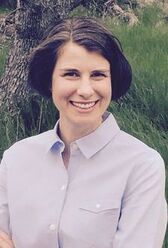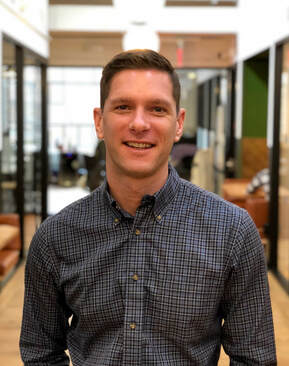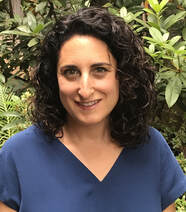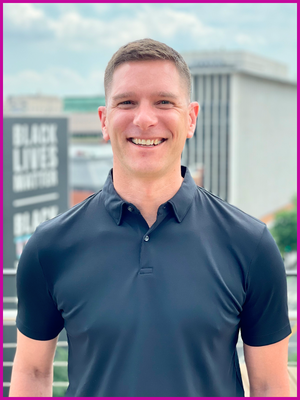 Corinne Dedini Corinne Dedini I love the look of dismay when I tell people that I’ve never met most of our teachers in person, which is something that I usually reveal after just having told them that our faculty is outstanding. How do we hire highly competent, values-aligned professionals when we can’t interview in-person? Here’s the secret sauce: Be unapologetic about who you are and what you need teachers to be able to do. You need to hire teachers who align with your values and, perhaps more importantly, want to grow in the areas where you want to grow. For example, in our job posting we link to our pedagogy whitepaper, say explicitly that the student-teacher relationship is the cornerstone of learning at One Schoolhouse, and describe how we work on tight deadlines. We go on to say, “If time management or building relationships are not your strengths, then this is not the job for you.” Candidates self-select into our pool who can meet our expectations because we don’t conceal anything about the logistics, values, or requirements of the job. Create opportunities for candidates to display the skills and behaviors you are looking for. We don’t select our interviewees based solely on their resume, cover letter, and recruiter printout. We ask candidates to perform tasks that demonstrate the essential competencies of One Schoolhouse employees. To continue the simple example above, as an online school we need our employees to read and respond promptly to what is asked of them in email. So, part of our application requires that they send specific documents to our Director of Studies as the final step in completing the application, and part of the interview requires that they meet live on video chat under specific conditions -- strong internet connection, professional demeanor and background, etc.... Candidates who don’t follow the instructions don’t continue to the next step in the process. We don’t take for granted how important responsiveness is for online teachers, so we test it in various ways as explicit aspects of the interview. Philosophical alignment isn’t enough to do the job. Design an interview process online. Our candidates participate in three “rounds” of an interview in our LMS over the course of three weeks. This is our opportunity to clarify our school’s values and practices, show people who we are through intentionally designed modules, and to give candidates the chance to interact with us (and with each other, which produces compelling results!). In a face-to-face school, this is the equivalent of the day where the prospective teacher walks the halls, evaluates the climate of the community, and gives a sample lesson. All these things can happen online through a finely tuned experience in the LMS. Use a hiring rubric. As independent schools work to increase diversity amongst their faculty, a hiring rubric is essential to reducing bias. The hiring committee at One Schoolhouse is engaging in a candidate norming exercise this week, where we vet sample candidates against our rubric, then compare our results. For years I hired for “fit” but as our values have expanded into the realm of inclusive innovation, the methods to living those values demand far more intentional practices. Without campus visits, this is the year to assess your hiring practices and take advantage of resources such as our Hiring During a Pandemic online course, hiring-specific Academic Leaders Webinars and blogs. This may just be your best hiring year yet.
1 Comment
How do you ensure intentional practices for teaching and learning?
Start by deciding what good teaching and learning looks like at your school and define terms clearly. Making that decision by faculty committee is far too often a recipe for in-fighting and hurt feelings. Instead, consider hiring an outside researcher to study the practices being used at your school, review current literature on best practices, and create a starting place for discussions. Slowly engage more administrators at your school in crafting and editing the statement, and ensuring that the statement feels authentic to the lived practice at your school. We went this route when we founded One Schoolhouse back in 2009. Back then, online learning was new and there was incredible skepticism about its effectiveness and efficacy. So we commissioned a literature review from our friend Lisa Damour (back before she was a best selling author). The literature review formed the basis for our first school-wide pedagogy whitepaper. Today, we are releasing our latest version of our pedagogy whitepaper, the fourth version of this work. In between versions, we keep a list of new literature that emerges and engage our faculty in discussions about their emerging practice in their online classrooms. This keeps our thinking fresh and evolving -- very few of the citations from version one of our whitepaper appear in this version. Oh yeah, the follow-through is important too. A clear, coherent vision is important. As important are tools that allow the vision to be put into practice. This is where standards come into play. Standards help bring the pedagogical vision to life by defining terms more deeply and aligning terms to the lived experience in the classroom. Here again, we know that without clear definitions and terms, practices can be misaligned throughout a school. The example I give in this regard that seems to most resonate with administrators and teachers is from the Hybrid Learning Standards that we released last spring. One of our teaching standards relates to the student-teacher relationship: “Teacher builds an authentic relationship with each student as a cornerstone of the learning experience.” I can’t imagine many independent school teachers disagreeing with this standard. But, without definitions, this standard could have different meanings to different faculty members. So, as academic leaders, we have to go further than just the standard to define the practice. In this case, we do so as: “Teacher builds learning partnership with students based on mutual respect and trust, knows student’s goals and learner profile, and actively works to support growth through regular contact with and feedback to students.” This ensures that the standard is not misinterpreted (as would otherwise be the case) by some faculty members as “the kids like me.” We use standards like this one with our faculty at One Schoolhouse, and even go an extra step by defining not just what sufficient practice is to meet the standard, but also what exemplary practice is, in order to help faculty stretch and set goals. (We don’t expect faculty to meet “exemplary practice” in more than a few areas; if they do, we start to “move the goalposts”.) Annually, we update the standards and practices to align to current research and emerging practices. In a few weeks, we’ll be sharing more on how schools might use standards to align practice to their vision and their school’s unique mission.
One Schoolhouse is intentional in creating learning environments that are learner-driven and personalized. Our pedagogy is explained in full in this document, and includes specific sections on competency-based learning and inclusive innovation. Fill out the quick form below and you will be redirected to download your copy today!
 Brad Rathgeber Brad Rathgeber How should we staff our school for the 2021-2022 school year? Every academic leader should be focused on this question right now. We can’t assume that the staffing needed next year is what we needed during this wild school year, nor can we assume that staffing should return to a pre-COVID world. We also can’t assume a “normal” year in terms of teacher retention or retirements. So how might we think about effective staffing for next school year? As we dive into this question, it is important to remember that faculty and staff expenses are the primary expenses at independent schools -- at day schools 70-80% of expenses are staff related, at boarding schools, it is 50-60%. Thus, staffing at our schools is the most important factor in schools’ ability both to meet their missions and to thrive and survive financially. With this in mind, let’s dive into the two sides of consideration for staffing the 2021-2022 school year. What staff do we need to meet our mission and thrive financially? The school that thrives in the post-pandemics world will not simply “return to normal,” but instead be a school that has learned key lessons from the COVID-pandemic and from addressing the pandemic of systemic racism. Schools transformed overnight in March and continued evolving rapidly throughout the summer. Sacred cows suddenly weren’t so sacred. That’s a good thing. Throughout the pandemics, we have been advising schools to have an archivist -- someone responsible for documenting what has changed. As you plan for staffing the 2021-2022 school year, review the list of what has changed and consider what changes should stay going forward. For example, did you change your schedule and in the process realize that time and space could be used differently? Might your keep a “start time” change in the future to improve student wellness? Did you find that a mix of synchronous and asynchronous work allowed more time for project-based learning? In addition to a review of what has changed and should remain, academic leaders also need to take an inventory of competencies and skills that are needed moving forward, both for your faculty as a whole and for individual faculty members. For example, almost certainly faculty job descriptions should include increased expectations for everything from diversity, inclusion, and equity practices, to course design, to assessment practices, to expectations for being on campus (or not?), and to technological acumen. These competencies are no longer “nice to have,” but now “need to have.” At the same time, enrollment will be a moving target for schools throughout the winter, spring, and summer. Some schools will see marked increases going into next school year; some schools will see marked declines. Academic leaders will need to be in constant contact with admissions offices, and build their faculty corps for flexibility -- faculty members with an ability to teach a range of classes will be more valuable than faculty members with specific niche skills. Will faculty stay? This is a real question given this past year. Faculty and staff members are exhausted. In many schools, the trust relationship between faculty and administration has frayed. And, the stock market remains high, giving enough comfort to allow teachers close to retirement age to feel secure enough to retire sooner rather than later. As academic leaders, you need to know who is not planning on returning now, not later in the spring. And yet, many faculty members will want to wait to make decisions about returning until later in the spring, once it becomes more clear what the 2021-2022 school year may look like. Academic leaders will want to reach out to faculty members directly and consider setting deadlines for decisions. Leadership teams will also need to be in constant communication with each other so that, for example, information gained by a department head is relayed to the dean of faculty. Finally, another reason academic leaders need to know faculty retention decisions early is that the hiring process itself will likely be very different, without an ability to have finalists on campus.  Liz Katz Liz Katz Happy New Year! 2021 couldn’t come fast enough this winter. At One Schoolhouse, our team always looks forward to the start of the year because it’s the moment we launch our courses for the next school year. Our 2021-2022 course catalog is live, and registration for summer and school year courses is open. We’re continuing to offer a wide range of courses across disciplines, and we’re excited about the new courses we’re launching this year: Expanding Languages: In 2021-2022, we’re continuing to build our American Sign Language program out with ASL - Beginning II. (Look for ASL - Intermediate coming in Fall 2022!) We’ve heard the feedback that language students and heritage speakers have different needs, so we’re adding AP Chinese for Heritage Speakers to ensure that every student gets the preparation they need to succeed at the highest level. In addition, we’re adjusting our French sequence to offer both French - Intermediate I and French - Intermediate II, ensuring we have the right entry level for every student in our program. Focusing on Identity: In our annual survey of consortium schools, we saw an unprecedented consensus that our schools want to offer academic courses that reflect the diversity of their students and their communities. We’re excited to offer two new fall semester courses, Black Identity in the United States, and Latino/a/x Identity in the United States. These courses take a transdisciplinary approach to explore the history, culture, and politics of oppression and resistance in Black and Latino/a/x communities. Increasing Advanced Placement Courses: We continue to field requests from our schools to add to our Advanced Placement course listings. This year, we’re offering AP Chemistry for the first time. In addition, we’ve added AP Physics 2, which means we’re now offering all four of the College Board’s AP Physics offerings. Offering More STEAM Courses: As college majors in STEAM disciplines continue to grow, we’re meeting the need for high school students who want to get a jump start in related fields. Three fall semester courses with spring seminar options provide opportunities for advanced study. Advanced Topics in Chemistry: Applications in Biochemistry, Organic Chemistry, and Environmental Chemistry allow students to apply what they learned in the lab to real-world settings. Anatomy & Kinesiology focuses on the human body through the lens of exercise and movement. Artificial Intelligence provides students with the opportunity to explore the intersections of technology, coding, and design as they learn the foundations of AI. Finally, our new summer course, Algebra I, provides the foundation for high school math. This course is a great opportunity for rising ninth graders to ensure they’re on the path to Calculus before graduation. Calling For Teachers: We’ve opened our Call for Teachers for the 2021-2022 school year. One Schoolhouse is looking for growth-focused talented educators. If you discovered that teaching online opened new possibilities for you, visit our website to learn more. |
Don't miss our weekly blog posts by joining our newsletter mailing list below:AuthorsBrad Rathgeber (he/him/his) Archives
July 2024
Categories |


 RSS Feed
RSS Feed